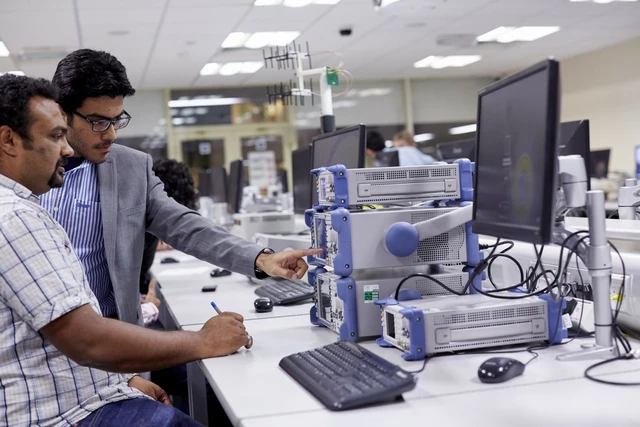Tata Steel – Trends, Analysis and Industry Outlook
When talking about Tata Steel, India's leading integrated steel producer with operations spanning continents. Also known as Tata Steel Ltd., it drives innovation in the steel industry, the sector that transforms iron ore into essential building material and pushes forward sustainability, efforts to reduce carbon intensity and recycle waste in metal production. Understanding these links helps you see why Tata Steel matters across economics, environment and technology.
The steel industry today is a web of supply chains, market cycles and policy shifts. One key attribute is its reliance on raw material prices—iron ore, coal and scrap metal— which directly affect Tata Steel's cost structure. Another attribute is capacity expansion; new mills in India and abroad are reshaping the global steel market. Together, these factors create a dynamic environment where a single company can influence trade balances, employment levels, and regional development. For readers, this means the data we share later will touch on price trends, production volumes, and policy impacts.
Why Tata Steel Matters for India’s Manufacturing Future
India’s manufacturing sector is often measured by its steel output. Tata Steel contributes roughly a fifth of the nation’s total production, making it a bellwether for industrial health. Its investments in high‑strength, low‑weight alloys enable automotive and infrastructure projects to meet safety standards while cutting fuel usage. Moreover, the company's focus on green steel—using hydrogen‑based reduction and renewable energy—aligns with India’s climate goals. These attributes show how Tata Steel connects the dots between raw material supply, advanced engineering, and sustainability.
Globally, the steel market faces shifting demand as construction booms in Asia and decarbonization pressures grow in Europe and North America. Tata Steel’s overseas assets, especially in Europe, expose it to EU carbon pricing, prompting the firm to accelerate low‑carbon technologies. At the same time, emerging markets in Africa and Southeast Asia present growth opportunities. This dual exposure creates a unique risk‑reward profile that analysts watch closely. When you read the posts below, expect insights on how these global forces shape Tata Steel’s strategy.
Technology also plays a huge role. Digital twins, AI‑driven predictive maintenance, and automation are now standard in steel plants. Tata Steel’s adoption of these tools reduces downtime and improves product quality. The move toward Industry 4.0 illustrates a broader trend where traditional heavy industries become data‑centric. For anyone curious about the intersection of steel and tech, the upcoming articles break down real‑world examples—from smart furnaces to blockchain‑based supply tracking.
Financial performance ties all of the above together. Revenue growth, margin trends, and cash flow are directly linked to raw material costs, capacity utilization, and regulatory compliance. Tata Steel’s recent IPO activity in international markets, as well as its grey‑market premium, signals investor confidence despite volatility. In the posts we’ll cover, you’ll see concrete numbers, share price movements, and what analysts think about the company’s valuation.
From a sustainability angle, Tata Steel reports on CO₂ emissions per tonne of steel, recycling rates, and water usage. These metrics matter because they affect the company’s eligibility for green financing and government incentives. When you explore the content below, you’ll find comparisons with global peers, progress updates on the company’s climate targets, and practical steps the firm is taking to meet them.
Human capital is another piece of the puzzle. Tata Steel employs tens of thousands across factories, R&D centers and sales teams. Its workforce development programs, apprenticeship schemes, and diversity initiatives shape the future talent pipeline for the whole sector. The stories we’ll share highlight case studies of employee training, safety improvements, and community outreach that reflect the company’s broader societal role.
Policy and regulation cannot be ignored. Trade tariffs, anti‑dumping duties, and environmental standards all influence Tata Steel’s strategic decisions. Recent changes in import duties on raw materials have prompted the firm to reconsider its sourcing strategy, while new carbon pricing mechanisms in Europe push it toward greener production methods. The upcoming articles will unpack how these rules translate into real‑world actions for the company.
All of these angles—market dynamics, technology, finance, sustainability, people and policy—interlock to form a complete picture of Tata Steel’s impact. By the time you finish reading the collection below, you’ll have a clearer sense of where the company stands today and where it could head tomorrow.
Ready to dive deeper? Below you’ll find a curated mix of analysis, data points and expert commentary that walk you through each of these themes, giving you practical takeaways and a solid grounding in Tata Steel’s role within the wider steel industry.
Nifty 50 climbs to 24,894, Sensex up 223 pts; banks, metals lead gains
India's markets rose on Oct 3, 2025 as Nifty 50 hit 24,894 and Sensex climbed 223 points, driven by banks, metal stocks and a dip in volatility.





